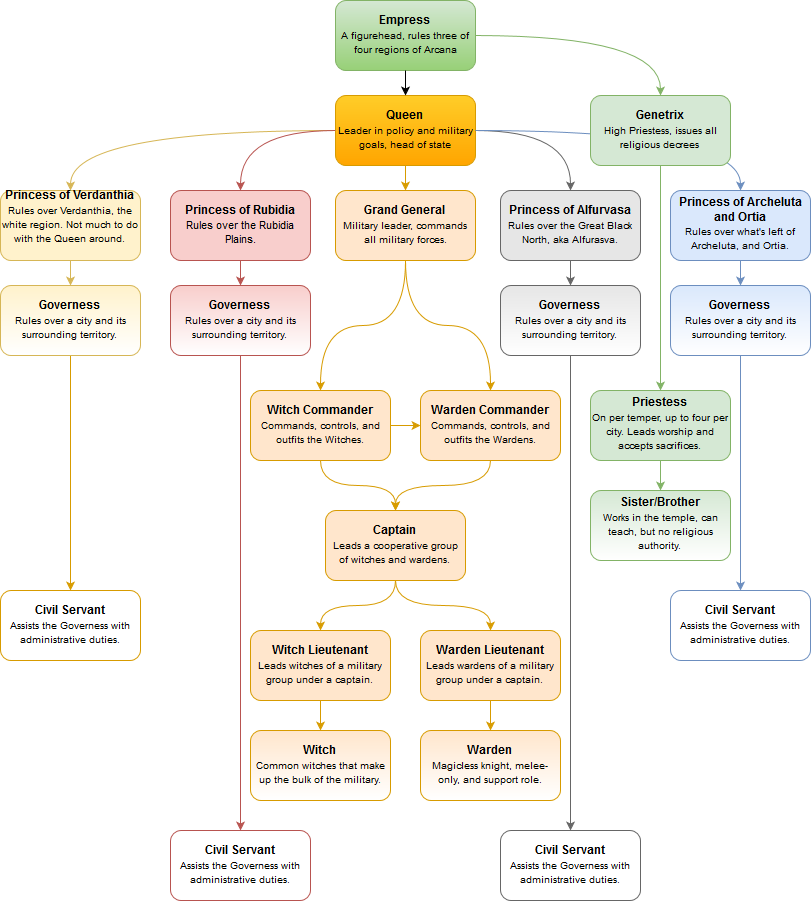Epiphany
Proverbs 17:9
Table of Contents
Rules: The rules and guidelines of this roleplay that must be followed by all players.
Magic: The mechanics of how magic works.
Geography: General overview of the lay of the land and various locations.
History: A brief outline of the relevant parts of the history of the setting.
Culture: Information on the gender roles of Arcana, as well as the organization of the government and the military.
Magic: The mechanics of how magic works.
Geography: General overview of the lay of the land and various locations.
History: A brief outline of the relevant parts of the history of the setting.
Culture: Information on the gender roles of Arcana, as well as the organization of the government and the military.
Last edited:


